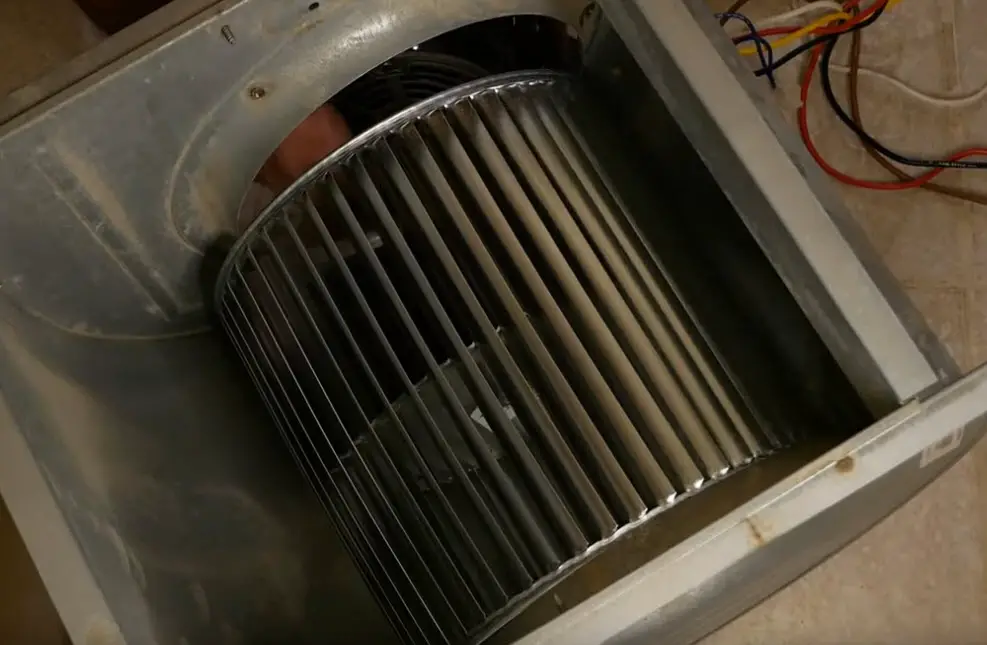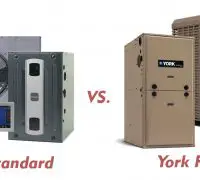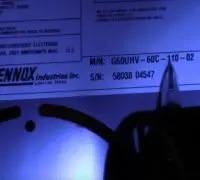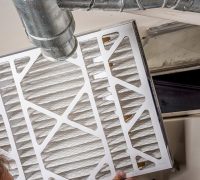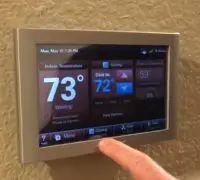Furnaces are the power horses that heat our homes, but they can become annoying when they get noisy, especially at night. Some will try to lower the fan speed, but that won’t make the noise disappear. Turning off the furnace isn’t a good idea, mainly if you live in a cold region. Complex furnace repair methods might be necessary to make the loud noise disappear.
Page Table of Contents
- Where is the furnace blower?
- How can you quiet a loud furnace blower?
- Set the furnace fan to an appropriate speed
- Find and replace any loose parts
- Fasten the furnace motors
- Use return air ducts
- Attach the furnace to support beams
- The blower fan might need fixing
- Adjust the blower fan blade alignment
- Oil the furnace motor and parts
- Repair or replace the motor mounting grommets
- Add some insulation
- Make better connections
- Clean the blower fan
- Fill gaps in the ductwork
- Replace the motor
- Fix damaged insulation
Where is the furnace blower?
The blower assembly is relatively easy to find—the large, round housing with the blower inside. The capacitor outside the assembly looks like a round or oval “can.” It has wires connecting to the blower assembly. To stop the noise, you need to find the source first, which can be more time-consuming than you think. Please check into it before concluding that it’s the blower causing all the loud noise.
Most of the time, thorough cleaning and lubricating of the blower will make the loud noise disappear. The blower rarely needs bearing replacement or complete assembly replacement. Nevertheless, we’ll give you the details on solutions down below.
Should the humming sound continue even after you clean the fan or replace the capacitor, you will have to contact a certified HVAC technician for further investigation and repairs.
How can you quiet a loud furnace blower?
The following tips to quiet down your loud furnace blower are straightforward, so you don’t necessarily need to call the pros.
Set the furnace fan to an appropriate speed
After you set the furnace, you should set it to the proper speed for your household. When the furnace blower howls on a medium setting, reduce the speed to see if it reduces the noise. Ideally, you need to gradually increase or decrease the furnace’s speed as you use it.
If you’ve turned the fan up slowly and still notice the howling sound, you should increase the speed in small increments (by a one-speed setting). Wait and pay attention to the sound. If increasing the speed isn’t practical, you can try reducing it in increments until you find the perfect setting.
Find and replace any loose parts
A loose part can make the furnace blower sound louder than usual. The furnace blower is, in fact, an air compressor that blows heated air through the system. Loose belts or bolts can make the blower shake and make a loud noise.
You can take a look at the belts and replace any of the worn-out or broken parts. Look for loose screws in the fans and vents, tightening the loose ones. Some furnaces feature two distinct fan units (one on each side), so you must verify the screws on both.
Fasten the furnace motors
When the howling noise comes from the furnace blower movement, use some screws to fasten it to the housing. Sometimes, the howling happens when the motor begins to run or shut down; something might block its rotation. See that the belts aren’t loose nor rub against other parts of the furnace system.
Pay attention when examining everything around the furnace motor and tighten all loose screws, belts, and other components attached to the motor. Look at the rubber mount and ensure it’s still present and in good condition. The fastener connecting to the engine could be defective and cause a loud noise—remember to check it out!
As the motor is almost always running, shaking, and moving, the motor mounts can become loose in time. It can also happen due to poor tightening upon installation. As the motor jiggles and shakes against other metal pieces, banging noises may sound worse than they indeed are. Please look at the motor mount; it should be well-tightened.
Use return air ducts
Another thing you should try to quiet the loud furnace blower is to see the condition of the return air ducts. Most furnaces feature grills on the return air ducts that can generate a loud noise. When the howling comes from this area, you should shut off the power supply and cover every intake to do it effortlessly.
If this doesn’t eliminate the loud noise, you can point a desk fan to the howling side of the ducts. It’s an efficient method to circulate air and eliminate the howling problem.
Attach the furnace to support beams
This isn’t the easiest or cheapest solution to quiet the noisy furnace blower, but it’s a solution. The furnace may have always been loud and the sound worsens over time. If so, you can try attaching the blower motor to support beams so that no movement generates howling or similar noises in the furnace.
The blower fan might need fixing
The blower fan could be noisy for several reasons. Typically, the motor’s bearings require lubrication or complete replacement. When this happens, you will hear loud noises from the furnace blower. If not addressed, the howling will only get worse in time.
It’s not very complicated to fix the howling noises the blower fan generates. You can try lubricating the bearings on your own or ask an experienced HVAC technician to do it. Should it be necessary, the blower motor might need replacement.
You must see how loud the furnace is when the blower doesn’t operate. Compare the sound with the noise you hear when the blower is running. If there’s no howling, there’s nothing wrong with the bearings and some lubrication will eliminate the loud noise.
If the furnace fan begins to howl very loud (you can hear it in the whole house), the bearings are shot, and you should immediately lubricate or even replace them. In time, the bearings in the fan will start to wear out and eventually fail. Unwanted noise will go through the ductwork. Replacing the blower fan bearings is an easy fix to the loud noises.
Adjust the blower fan blade alignment
Some furnaces feature an adjustable blower fan blade alignment that lets you set the fan blades for proper spacing between them. The feature can help reduce the noise in the furnace blower when it blows heated air through the ductwork.
Oil the furnace motor and parts
Sometimes, the furnace blower is loud because you haven’t used it for a long time. The motor might be dry because of the lack of use. Add oil to the blower’s shaft and spin the components before turning the furnace back on. If lack of service is the cause of the loud noise, the trick will eliminate the loud sound. Include oiling of the furnace motor and parts in the regular furnace maintenance routine.
Repair or replace the motor mounting grommets
You can also try replacing the motor mounting grommets. If they’re worn out, they are the reason why the furnace blower is so loud. The procedure is straightforward and affordable. Keep in mind to shut off
Add some insulation
All machines and motors make noise and that’s the way it is. One way to reduce the level of sound is by insulating the components. You can use cleaning products (“magic eraser”)made with heat-resistant insulating material—melamine foam.
You can cut a sheet of thin galvanized steel to the size of the space inside the furnace, close to the blower intake. Use the cleaning products to cover the sheet and glue them on. Get chicken wire to cover the erasers to protect them from getting sucked into the blower. It’s a trick that can eliminate loud noises.
Make better connections
More often than not, a furnace will begin to produce whistling noises due to a tiny gap between the blower and the ductwork. The whistling noise might happen because the air filter is clogged and there’s an easy fix.
To make sure that the dirty air filter is the cause of the noise, you need to remove the air filter. You will need to replace the air filter if the loud noise disappears. Don’t wait until you replace the air filter. If the air filter is clogged for a long time, the blower fan will struggle and wear out sooner than expected.
Clean the blower fan
Too much dust buildup on the blower fan could also make the loud humming sound on the blower. The collected dust generates wind resistance and generates a loud humming noise. Cleaning the blower fan might do the trick and eliminate the sound!
Fill gaps in the ductwork
Use a sealant made for soundproofing to fill in the gaps in the ducts. The sealant has to be heat resistant. If you examine the furnace and suspect that the humming noise comes from the ductwork, eliminating gaps or completely wrapping the ducts with insulation will decrease the sound and even improve the ductwork’s energy efficiency.
Replace the motor
Sometimes, the loud sounds will signal that the motor is busted. In such cases, replacing the engine is the only solution.
Fix damaged insulation
If the furnace’s insulation is damaged, loud noise can occur due to the air flowing through it and around other components. You have to prevent it by replacing it with good quality insulation material. Even if the method is time-consuming, it’s one of the most efficient.
You can use insulation foam spray or expanding foam in tiny crevices around the furnace blower. It will reduce the risk of air moving through the space and generating noise. The trick also prevents heat loss and improves the furnace’s energy efficiency.
